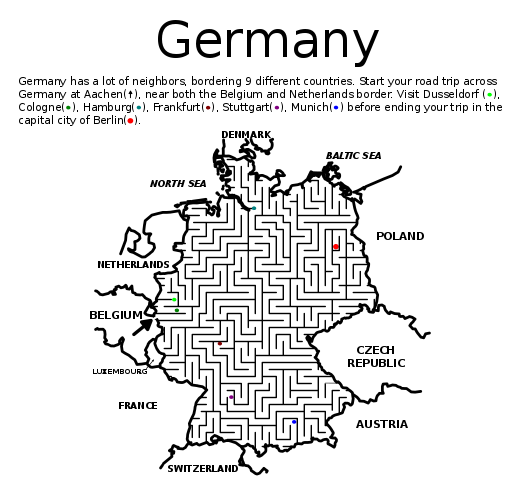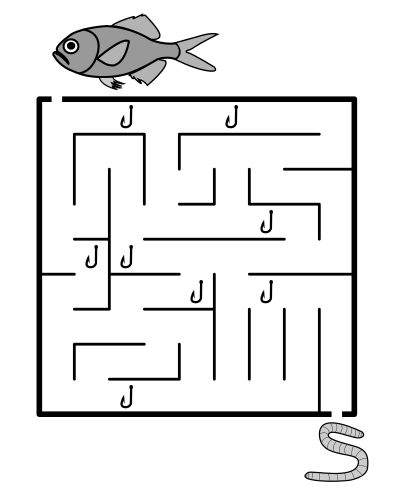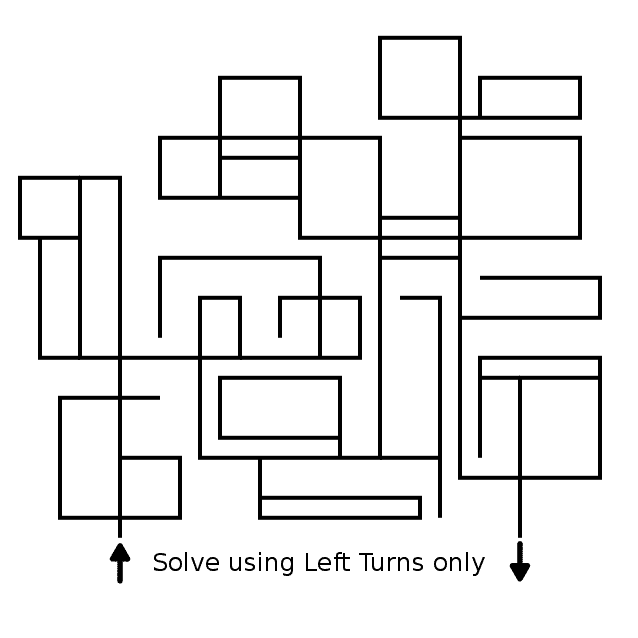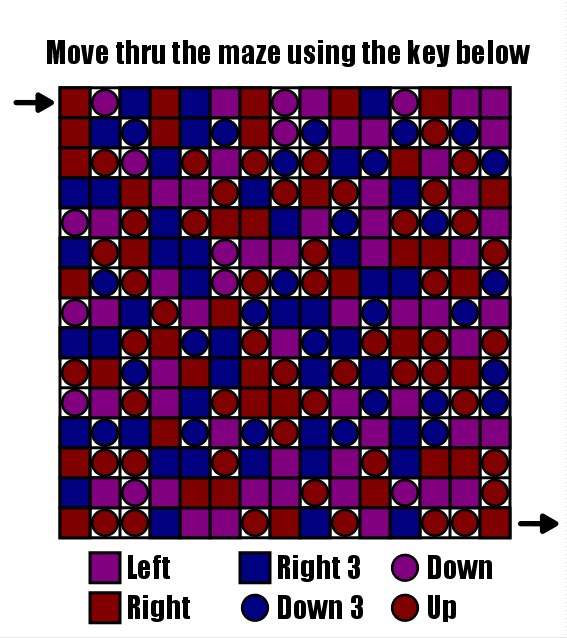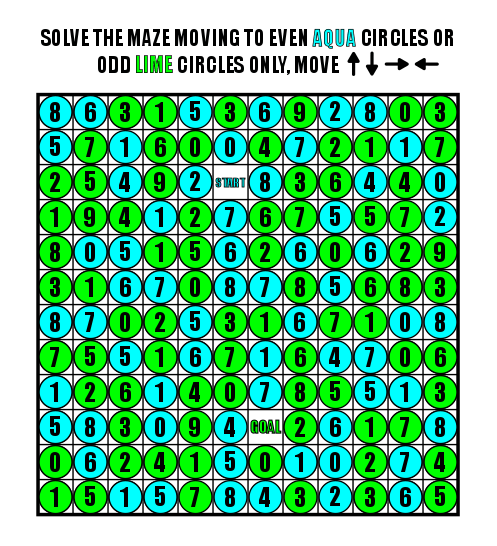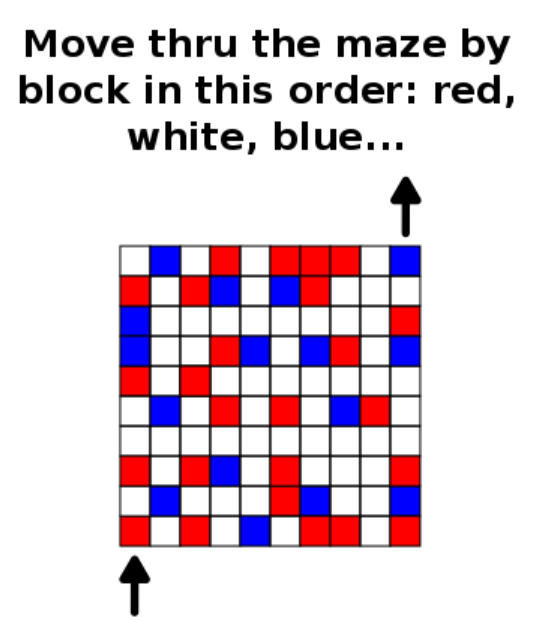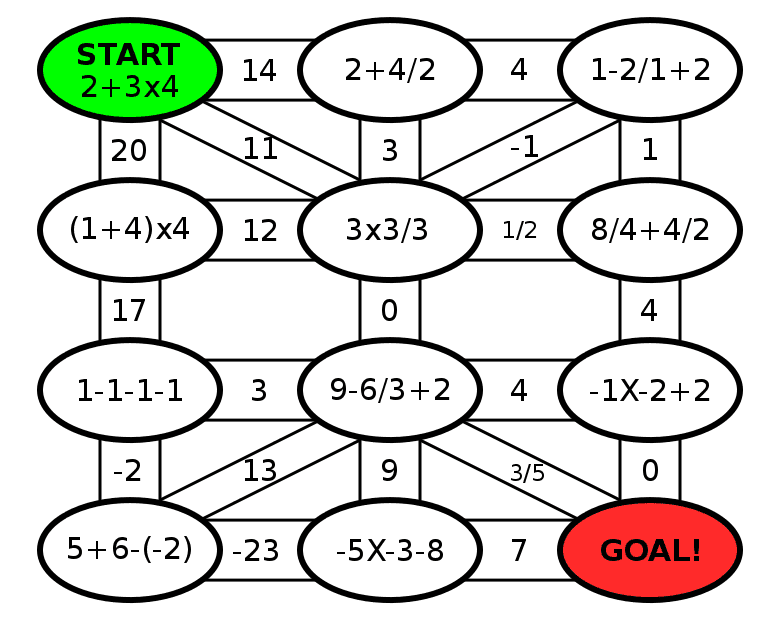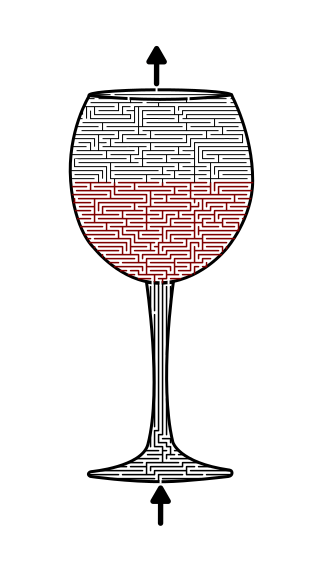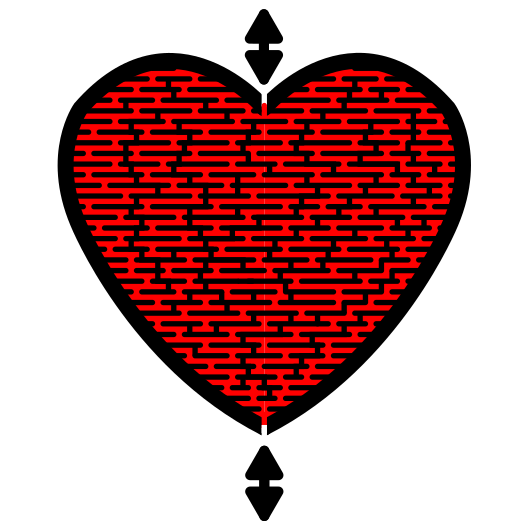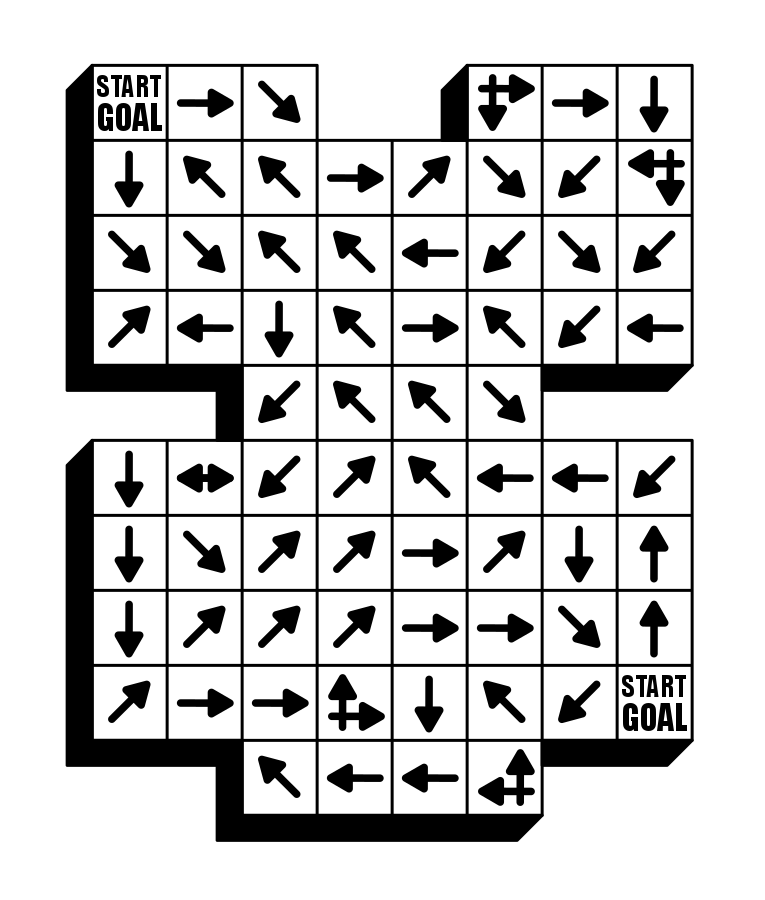Welcome to Part 3 of my 3 part series on maze construction options. Previously, I gave you step by step instructions to make over 40 different maze constructions. But making a maze also means making a series of different decisions, each that will change the look and difficulty of the maze. Here are the Parts we will cover in the series:
Part 1 - Starting and Ending a Maze
Part 3 - Conditional Path options
Let’s get started with Part 3: Conditional Path Options
In Part 1 we looked at starting and ending your maze. In Part 2 we looked at all the different options for making your pathways. Today we look at a specific subset of maze construction that I call Conditional Path Mazes. This group of mazes is a choice you make as a maze maker to give your solver a bit of an extra challenge. Call them what you want, but can they follow a set of guidelines, conditions, or rules to solve the maze ? Let’s look at types:
1 - Find Items Maze
This is a simple condition mostly. You move through the maze from start to finish, but along the way there are places you need to visit to essentially find items, thus the name. It also works well for Map mazes, where finding the item, or visiting the city is the goal of the maze. Here’s a Germany maze for example:
Note: A subset of this version would be the find items in order maze, where you stipulate the order things must be found/visited.
2 - Avoid Items Maze
The opposite of finding is avoiding, at least for maze construction. This is a natural option for mazes, after all you are already avoiding dead ends !! Really these Avoid Items just create artificial dead ends within the maze, and hopefully help tell a story. Like this example of a Fish avoiding hooks. I could have made more walls but what fun is that ?
3 - Directional Mazes
A maze that states the directions you may move in is a directional maze. To reference Part 2 in the series on pathways, this could be a regular pathway or online. Below is an On Line Maze with the condition that you can only turn left to solve it.
4 - Puzzle Maze
The condition of this maze type determines your movement. This means solving a puzzle to determine your movement thru the maze. In the first example below the movement is determined with a key - you must follow the directions to solve the maze and there are no choices, but with the 2nd puzzle movement is determined by rules - and there are multiple possible ways to move between grids.
5 - Letter Maze
Simply the rules involve letters…and in this version you have choices on where you move…i.e. this M or that M from START.
6 - Number Mazes
Or similarly, numbers to determine movement. This particular variation is based on division and is a Counting maze.
7 - Color Grid Maze
Movement thru the maze is determined by following a series of colors in order.
8 - Conditional Color Path Maze
Similar to #7 but the pathways change colors rather than being colored blocks. As someone who makes a lot of mazes these are both fun and challenging to create. The non grid format gives you options to get complicated and math-y !! If you are a maze maker I suggest you try to make one of these.
9 - Non Reusable Pathways
This is used in a Go & Return Maze and sometimes in Find Items Mazes. The solver is asked to move thru the maze and never visit the same place more than once while solving. These tend to have “open floor plans” when it comes to walls. You want freedom of movement and choice to complicate the solve.
10 - Go & Return Maze
A Go & Return Maze is part #9 Non-reusable Pathway and part #1 Find Items Maze combined with a Start/Goal that is the same. So maybe this is a combination of things we have already covered, and maybe it isn’t. I thought it was unique enough to get it’s own option. In a Go & Return Maze you go from start to an internal part in the maze, then return back to start without using the same path. Those are the conditions to solve ! Here is an example:
11 - Math Maze
A variation of the number maze where your movement is determined by needing to solve a math problem to correctly advance. If you are interested I have made 11 different Math Maze Templates that are free to download.

